MODULE 4: Hot Wars, Cold Wars and More Refugees
Home (1948)
As a result of wars and other historical factors, there were millions of refugees on the move throughout Europe after World War II. Millions of German-speaking people leaving parts of eastern Europe where they had been living for generations, and lots of people emerging from concentration camps located thousands of miles from their homes.
Many people who had been seeking to flee Europe weren’t able to get visas to go to their first-choice destinations like the United States or Canada, so they went to places that would take them, including Palestine. Other European Jews thought joining the Zionist movement there seemed like a good plan, given the millions who had just been gassed to death by Nazis in Europe. For a variety of reasons, the population of Jews in Palestine had grown dramatically during the war – mostly European migrants.
The Zionist movement took the opportunity of their newfound size to take over. Jews at the time owned about 7% of Palestine legally. The newly-formed United Nations decided the Zionists could have half of Palestine, so that Palestine would be divided into Jewish and Arab sections of roughly equal size.
The Zionists then took 78% of Palestine from the Palestinians — driving 700,000 people from their homes and into refugee camps in areas controlled by neighboring countries, where many of them and their descendants still live today. Since 1967, the 22% of Palestine that the Palestinians had left has been cut down much further through the constant process of expanding Jewish-only settlements.
Many outsiders take the view that the Palestine-Israeli conflict is terribly complicated. But perhaps it’s really no more complicated than the phrase, “I want to go home.”
“I Wanna Go Home”
Ford’s Lawsuit (1952)
Ford Motor Company was one of many corporations that managed to make lots of money from both sides of the Second World War (and many other wars). They did a lot of paper-shuffling and name-changing, but it was all just for appearances. Ford in Germany became Opel (just as Coke became Fanta). In Michigan, Ford built tanks for the US Army. In Germany, Opel built them for the Nazis.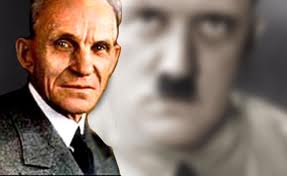
But that’s not nearly the end of the story. Henry Ford himself was a big fan of Hitler back in the 1930’s, when it was more acceptable in the US to be a fascist. Ford was an anti-Semite and a big fan of the racist pseudo-science of Eugenics. The crowning achievement of his company, however, came after his death, in 1952, when Ford Motor Company won their lawsuit for damages against the United States for bombing their tank factories in Germany during the war.
“Henry Ford Was A Fascist”
Korea (1950-53)
Having learned nothing from years of committing crimes against humanity in the skies above Germany and Japan, only a few years after World War II ended, the US was once again at war on a massive scale. In the US it’s often referred to as “the forgotten war” – a very strange and insulting term to use for a war that took the lives of millions of Korean civilians, a very large portion of them children.
In defense of a dictator originally appointed by the Japanese occupiers, the US dropped more bombs on North Korea than all sides of World War II combined. (It would later repeat this feat in many other countries.) Almost every building standing was destroyed by bombing, and the US broke all possible concepts of human rights when on numerous occasions the Air Force bombed dams, causing terrible flooding and death.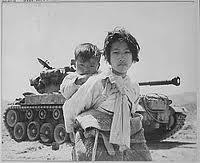
China entered the war on the side of North Korea. Ask most US citizens if they’re aware that the US was once at war with China, and very few of them will know it was. Half a million Chinese soldiers, 50,000 Chinese trucks, 38,000 US soldiers, and untold millions of Korean soldiers and civilians, a country completely demolished. This was the situation after the US left North Korea and began fighting the next phase of the Korean War, the “Cold War.”
The international press tends to talk about the situation on the Korean peninsula as if the world’s biggest army (the US) and South Korea repeating their mantra, “all options are on the table,” while doing huge military exercises constantly directly off the coast of North Korea is something normal — whereas North Korea testing their missile systems is a horrendously provocative act that should be responded to by starving the population of the country.
As one US president after another refers to the North Korean leadership as “paranoid,” imagine if they switched shoes for a moment. What if North Korea had destroyed every building in the United States back in 1953? Would the North Korean media be saying people in the US are paranoid for being worried this could happen again? Probably – and for good reason.
“Korea”
The Rosenbergs (1953)
The FBI’s first Enemy Within was the radical labor movement and the movement against “the Great War,” in the form of the Industrial Workers of the World. By the 1950’s, the Enemy Within were the communists. The alliance with the Soviet Union to defeat fascism in Europe was a very temporary one. Before and after those few years, the great enemy was Bolshevism.
The concept that there might be another way to an equitable and prosperous society aside from through the brilliance of free market capitalism was dangerous for the ruling class in the US, and had to be opposed in a sort of existential way, beyond any attempt at reason. (Meanwhile, it also had to be opposed through western countries developing functional welfare states – we couldn’t have bread lines, those were only for Russians.)
The US fought a genocidal war against the people of North Korea in the name of defeating communism. While that was happening across the Pacific, at home in the US, communists or those suspected of being friends of communists were being singled out and blacklisted from various kinds of work. In the main labor movement federation, the AFL-CIO, the communist backbone of the CIO had been purged as a precondition for the two union federations to join into one.
As declassified documents would later reveal, the Soviets did not need any outside expertise to help them develop nuclear weapons. As other declassified documents would later reveal, the FBI knew that Ethel Rosenberg wasn’t a spy for the Soviets, but that her husband, Julius, was. Nevertheless, they accused both of them of spying in order to try to break Julius — to get him to talk to save his wife. Neither of the Rosenbergs would talk, and both received the death sentence – the electric chair.
“The Ghost of Ethel Rosenberg”
The Golden Rule (1958)
The 1950’s were a difficult time for forward-thinking radicals in the US. Emerging from World War II, half of the world’s industrial production occurred in the United States. As a result, the US had nearly full employment and lots of good-paying union jobs. Add to this the New Deal reforms and more recent reforms like the GI bill, and there were a lot of people in the US who were benefiting from a reasonably well-run welfare state and a prosperous economy.
For communists in the US there was, on the one hand, McCarthyist purges and hysterical, “better dead than red” propaganda. On the other hand, there was the discovery at this time of the extent of the horrors of Stalin’s gulags and purges in the country that was once supposed to have been the shining example of a dynamic new ideology in practice.
For people of conscience, however, there is always the need to try to make a difference, regardless of the circumstances. World War II was a very popular war in the US, and an existential crisis for people in many other countries. Yet there were those who refused to fight, out of pacifist convictions.
There were also those who were opposed to the existence of, and of course the use of, nuclear weapons, and other weapons of mass destruction. Some of them took to the Pacific Ocean in a boat called the Golden Rule and attempted to disrupt further US plans to test nuclear weapon on Pacific islands. Other activists in boats would later do the same.
Trading With the Enemy (1961)
You could say that the US war against the people of the island of Cuba began in the 1890’s. When the Cuban people won their independence from Spain, the US invaded immediately and treated the island as a US colony for more than half a century. The US doesn’t officially have colonies, so these colonies were always referred to in different ways, but colonies is what they were – Cuba, Puerto Rico, the Philippines, etc.
The Cuban people emerged from the morass of US-sponsored mafia corruption in 1959, with the revolution led by Fidel Castro, Che Guevara and friends. Soon thereafter came the Trading With the Enemy Act from the US Congress, initiating the embargo against trade with Cuba that has continued unabated since then.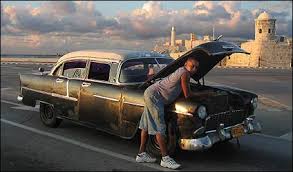
The particularly crippling aspect of the US embargo has always been not just the fact that the most populous nearby country isn’t available to trade with, but that any ship trading with Cuba cannot dock at a US port for six months prior to docking in Cuba. This means a logistical nightmare, higher prices, and other problems for Cuba.
Despite the embargo and many other problems the US has made for Cuba over the country’s entire existence as a sovereign nation, Cuba has managed to achieve an average lifespan and literacy rate better than in the US. In spite of the embargo, Cuba has sent untold thousands of doctors and nurses around the world to help people in every corner of the globe for decades, and after the loss of Soviet oil subsidies Cuban society once again proved its vitality by becoming a world leader in organic agriculture.
Many people in the west dismiss Cuba out of hand since they only have one political party (the Communist Party). As historian Howard Zinn was fond of responding to that particular statement, “in the US we have two parties – that’s just one more than one party.”
“Trading With the Enemy”
The Man Who Saved the World (1962)
Although the US already had lots of nuclear missiles aimed at the Soviet Union in countries that bordered Russia, such as Turkey, the US leadership was apoplectic about the idea that the Soviets would respond in kind, by basing its own missiles in revolutionary Cuba.
Unbeknownst to the US government, the Soviets had already moved nuclear missiles into Cuba, but the US initiated a naval blockade to prevent Soviet ships from going to Cuba. A naval blockade in international waters is an act of war. (Incidentally, the US was conducting a naval blockade in the Pacific to prevent Japan from accessing Indonesian oil prior to the Japanese attack on Pearl Harbor – which was why Japan attacked the US in Pearl Harbor.)
Before the USSR sent ships to challenge the US blockade, the Soviet leader, Khruschev, spoke publicly about how Soviet ships were under orders to return fire if fired upon. When the Soviet ships were there, US destroyers fired what are known as depth charges, which are bombs – in other words, the US fired on the Soviet ships.
In engaging in this nuclear brinkmanship, President Kennedy was knowingly risking the lives of what his advisers estimated could be as many as 100 million US casualties if there was an exchange of nuclear missiles between the US and the USSR.
Fortunately for all of those millions of people in the US, Russia, Cuba and elsewhere who would have died if Khruschev’s military had followed Khruschev’s orders, the political officer on the Soviet submarine under fire disagreed with the other two officers on the sub about whether to retaliate by launching the nuclear missiles the sub was carrying.
The agreement of three officers was required to launch the missiles. Vasili Arkhipov’s dissenting vote is what averted a nuclear war in 1962, during the period that became known as the Cuban Missile Crisis.
“Vasili”
Bracero (1964)
Mexicans have been part of the fabric of US society since there has been such a thing as Mexico. Much of the present-day US used to be Mexico before it was invaded and annexed. Other parts, such as Oregon, had Mexicans present in the state before it was ever a state. For many decades after the Mexican-American War there was only the suggestion of a border, and people could pass back and forth in either direction freely.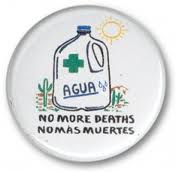
In the post-World War II era this all began to change. Mexicans who had been encouraged to fill vacant farming jobs when the US was at war were later declared unwanted and illegal. It was no longer enough for various industries in the US to have an easily-exploited work force of people without US citizenship – now a further degree of exploitation was deemed desirable, with the added designation of “illegal” now connected to much of the Mexican population in the US.
The border that used to be so porous is long gone. Every year now, more people die attempting to cross it – on average more than one per day.
“Guanajuato”
Occupation (1967)
Widespread opposition in the Arab world to Israeli apartheid (what Israelis will refer to as “the existence of the Jewish state”) and theft of Arab land led to war in 1967. In conquering its neighbors once again, Israel used the occasion to annex the rest of historic Palestine – the 22% of Palestine that they had left in Arab hands in 1948. 1967 was the beginning of the process of annexing what was left, one illegal settlement at a time.
“Occupation”
They Couldn’t Stand By (1968)
By the late 1960’s, much of the world had erupted in one form or another. The Cuban Revolution was one of the first in a series of successful anti-colonial revolts across Asia, Africa and Latin America. And across the world people were protesting in solidarity with oppressed peoples and against the genocidal US war in Vietnam.
That there were frequent, large protests at this period throughout the US was something that the media of the day and even since then was unable to ignore. But the question of who were protesting and why are things that the powers-that-be have attempted to revise in retrospect.
Politicians and the media outlets serving their interests tried to depict the antiwar movement as mainly a bunch of spoiled kids who had benefited so much from the fat of their privileged society that they had become unrealistic, living in a mental utopia, unable to see that it was in the national interest to destroy Vietnam – unable even to see that the concept of “the national interest” was one that they should be concerned about!
While this might characterize a lot of movement participants, what has been largely ignored is the fact that the antiwar movement consisted in huge part of ex-soldiers returning from Southeast Asia – so many of whom came home and immediately joined the antiwar movement. So many of them, in fact, had already been actively part of the antiwar movement right on their military bases in Vietnam.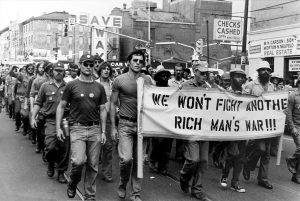
There were thousands of incidents of soldiers threatening and even killing their officers in incidents that became known as “fragging” – throwing a fragmentation grenade into the tent of an officer. Or leaving one on an officer’s desk, with the pin partway pulled out, and a threatening note attached. “Search and destroy” missions became “search and avoid,” as soldiers refused to go more than a few hundred feet away from their bases.
Active-duty soldiers typically went around with “FTA” (“Fuck The Army”) or “FTW” (“Fuck The War”) written on their helmets. They distributed and read leftwing newspapers put out by groups like the Black Panther Party or Students for a Democratic Society. There were antiwar coffeehouses run by activists (often veterans) outside of every military base in the United States.
Over 10,000 US planes were shot down over Vietnam. Most of the 55,000+ US combat deaths in Vietnam were people falling out of planes. Near the end of the war, even the pilots were refusing orders. The infantry had been doing that for years.
“They Couldn’t Stand By”
My Lai (1968)
World War I was an insane bloodbath, but most of the tens of millions killed in that war were soldiers. Later wars wouldn’t be like that. The US war in Vietnam was primarily a war against the civilian population. The idea was to carpet-bomb the country into submission, in the knowledge that the “army” they were fighting were the men and women of Vietnam.
Along with the carpet-bombing were the soldiers on the ground who were under orders to go into villages and kill anyone they came across. No one knows how many other villages there were that met the fate of My Lai. US soldiers had killed hundreds of men, women, children and, yes, babies, before Hugh Thompson and his helicopter crew came upon the scene.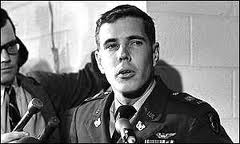
At first they thought they were coming upon a massacre committed by the enemy. When they realized it was their own side that were committing these atrocities, Hugh ordered his men to aim their weapons at the US soldiers there, to prevent them from killing the last few women and children who were huddled in a hut, awaiting their fate.
Decades later, Hugh Thompson would receive belated recognition for his “bravery in a non-combat situation” by the US Army. The only reason this small, belated recognition happened was because the government of Vietnam was about to give him an award for his heroism. During the ceremony in Vietnam, he would meet some of the young adults whose lives he had saved when they were very small.
“Song for Hugh Thompson”
Questions/thoughts for further exploration…
Home (1948)
Israeli Independence Day or Great Catastrophe? If you ask the 700,000 Palestinians who fled their homes in terror and were never allowed to return, the latter.
Ford’s Lawsuit (1952)
Henry Ford funded pro-Nazi speaking tours, was an active fan of “eugenics” (pseudo-scientific racism), and built tanks for Hitler. After WWII Ford Motor Company sued the US government for bombing their tank factories – and won. Which side was Ford on – the side of democracy, fascism, or capitalism?
Korea (1950-53)
Millions of civilians were bombed to death by the US Air Force, but in the US it’s often referred to as “The Forgotten War.” Why was it “forgotten”?
The Rosenbergs (1953)
Ethel Rosenberg was charged, convicted, sentenced to death and executed for a crime that the government knew she didn’t commit – just to try to get her husband, Julius, to talk.
The Golden Rule (1958)
Some people just have to do something regardless of any possibility of success. In the 1950’s, the antiwar and antinuclear movements in the US were very small – but they existed.
Trading With the Enemy (1961)
The US actively supports genocidal dictatorships in places like Guatemala, but Cuba has been under siege by the US since 1961 (or earlier). Is it really the lack of democracy that the US opposes in Cuba?
Vasili (1962)
JFK was ready to let 100 million US citizens be killed in a nuclear war with the USSR, but Vasili Arkhipov refused to allow this to happen.
Guanajuato (1964)
Mexicans used to be able to travel freely back and forth between the US-Mexico border, with no quotas. Since the Bracero Program ended, there is a new category for many Mexicans – “illegal.” What has this category meant for the US economy?
Occupation (1967)
According to international law, if a country conquers another country in a war, the conquering nation isn’t allowed to drive out the indigenous population and colonize the country themselves. That’s what Israel has done in the West Bank since 1967, which is why the Jewish-only Israeli settlements there are still considered illegal by the UN.
They Couldn’t Stand By (1968)
There is a widespread belief that the movement against the US war in Vietnam was a middle-class, privileged hippie phenomenon, dislocated from the general population. The fact is, many soldiers were refusing to fight, and when they got back home, they were joining the antiwar movement in massive numbers.
Hugh Thompson (1968)
The reason we know about the My Lai Massacre is because of the intervention near the end of it of Hugh Thompson and his helicopter crew. How many other My Lais were there that we never heard about? Why fight a war by repeatedly massacring the population you’re supposedly trying to liberate?
